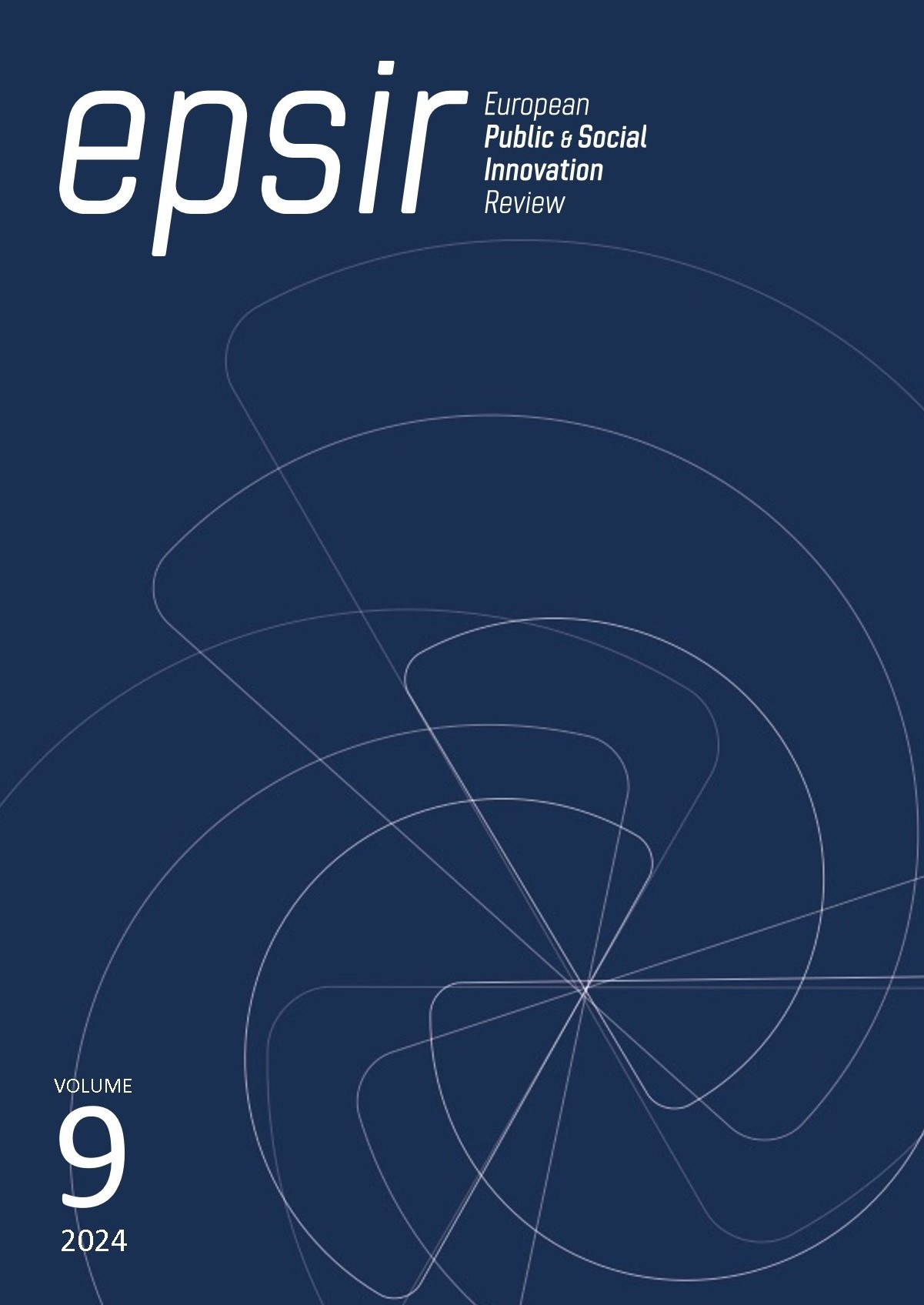Entre lo ilegal y lo permitido. La emigración ceutí en América, el caso de Manuel Coello el Africano y Antonio de Leiva
DOI:
https://doi.org/10.31637/epsir-2024-404Parole chiave:
Antonio de Leiva, Ceuta, Diego de Peñalosa, Emigración, Edad Moderna, Época virreinal, Manuel Coello el Africano, IndiasAbstract
Resumen: Introducción: Las relaciones entre Ceuta y América han sido atendidas de forma muy puntual desde la literatura científica, no obstante, se vislumbra como una de las líneas de investigación más interesantes y versátiles. En este estudio realizamos una aproximación al estado de la cuestión y a las posibilidades de análisis que brindan los archivos históricos, centrándonos en el Archivo General de Indias. Metodología: Se ha realizado un análisis y una clasificación de los fondos de este archivo en relación al ítem “Ceuta”. Posteriormente, y siguiendo una línea analítica-descriptiva, se han analizado dos legajos correspondientes a Manuel Coello el Africano y Antonio de Leiva. Resultados: El análisis documental nos ha permitido comprobar que la fecha establecida para la legalización de la emigración ceutí fue la de 1640, tras su anexión definitiva a España. Discusión: Esta investigación es una apuesta decidida por el estudio de las relaciones históricas y culturales entre Ceuta y América, sentándose las bases para un proyecto de investigación que permitirá hacer una valoración más completa de esta realidad. Conclusiones: De los 114 expedientes revisados hemos atendido dos casos que ejemplifican dos modelos de emigración a Indias, la ilegal y la oficial, permitiendo explorar nuevas vías de análisis.
Downloads
Riferimenti bibliografici
(1612). [Bienes de Difuntos: Manuel Coello el Africano]. Archivo General de Indias (Contratación, 308, N. 2), Sevilla, España.
(1772). [Expediente de información y licencia de pasajero de Alfonso Núñez de Haro]. Archivo General de Indias (Contratación, 5517, N. 2, R. 18), Sevilla, España.
(1781). [Bienes de Difuntos: Antonio de Leiva]. Archivo General de Indias (Contratación, 5685, N. 7), Sevilla, España.
Carmona Portillo, A. (1996). Ceuta española en el Antiguo Régimen de 1640 a 1800. Análisis demográfico y socioeconómico del segundo período de la presencia española en la ciudad. Consejería de Cultura de la Ciudad Autónoma de Ceuta.
Carmona Portillo, A. (1997). Historia de una ciudad fronteriza. Ceuta en la Edad Moderna. Sarriá.
Carmona Portillo, A. (2009). Ceuta bajo los Austrias. En F. Villada Paredes (coord.), Historia de Ceuta. De los orígenes al año 2000. Tomo II. De los Austrias al siglo XXI (pp. 15-63). Instituto de Estudios Ceutíes y Ciudad Autónoma de Ceuta.
Chávez, J. M. (2020). Túpac Amaru en Ceuta y sus memorias del exilio. Historia Social, 98, 25-38. https://www.jstor.org/stable/26932763
García López, M. B. (2010). Los Autos de Bienes de Difuntos en Indias. Nuevo Mundo Mundos Nuevos, s.n., s.p. https://doi.org/10.4000/nuevomundo.59829 DOI: https://doi.org/10.4000/nuevomundo.59829
Gutiérrez Álvarez, J. J. (2003). Ceuta en América I. México. Consejería de Educación, Cultura y Deporte.
Gutiérrez Álvarez, J. J. y Gutiérrez Micó, R. (2006). Ceuta en América II. Venezuela, Colombia y Cuba. Consejería de Educación, Cultura y Deporte.
Martín Corrales, E. (1988). El vecindario de Ceuta de 1718. En E. Ripoll Perelló (coord.), Actas del I Congreso Internacional del Estrecho de Gibraltar, III (pp. 145-158). Universidad Nacional de Educación a Distancia.
Mascareñas, J. (1671). Historia de la ciudad de Ceuta (única plaza de Portugal y sus conquistas que conservó la debida obediencia al Rey N.S.), sus sucesos militares y políticos; memorias de sus Santos y Prelados y elogios de sus Capitanes Generales. Edición de la Biblioteca Digital Hispánica. https://datos.bne.es/edicion/a5035745.html
Ruiz Oliva, J. A. (2016). Ingenieros militares del siglo XVIII en Ceuta y América. Instituto de Estudios Ceutíes.
Romero-Sánchez, G. (2022). El ceutí Diego de Peñalosa y su legado americano. Una historia en conexión a ambos lados del Atlántico. HUMAN REVIEW. Revista Internacional De Humanidades, 11, 1–9. https://doi.org/10.37467/revhuman.v11.4221 DOI: https://doi.org/10.37467/revhuman.v11.4221
Romero-Sánchez, G. (2024). Diego de Peñalosa y Mendoza, gobernador de La Habana y Veracruz en el siglo XVIII. Un legado indiano rico y diverso convertido en obra pía en la ciudad de Ceuta. Instituto de Estudios Ceutíes.
Sáinz Varela, J.A. (2006). Los pasajeros a Indias. Tabula: revista de archivos de Castilla y León, 9, 11-72. https://www.academia.edu/33273859/Los_pasajeros_a_Indias_2006_
Downloads
Pubblicato
Come citare
Fascicolo
Sezione
Licenza
Copyright (c) 2024 Guadalupe Romero-Sánchez

Questo lavoro è fornito con la licenza Creative Commons Attribuzione - Non commerciale - Non opere derivate 4.0 Internazionale.
Authors who publish with this journal agree to the following terms:- Authors retain copyright and grant the journal right of first publication with the work simultaneously licensed under Creative Commons Non Commercial, No Derivatives Attribution 4.0. International (CC BY-NC-ND 4.0.), that allows others to share the work with an acknowledgement of the work's authorship and initial publication in this journal.
- Authors are able to enter into separate, additional contractual arrangements for the non-exclusive distribution of the journal's published version of the work (e.g., post it to an institutional repository or publish it in a book), with an acknowledgement of its initial publication in this journal.
- Authors are permitted and encouraged to post their work online (e.g., in institutional repositories or on their website) prior to and during the submission process, as it can lead to productive exchanges, as well as earlier and greater citation of published work (See The Effect of Open Access).




